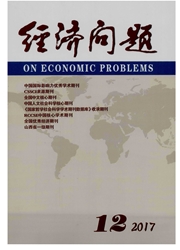

 中文摘要:
中文摘要:
以超越对数成本函数及弹性分析模型为基础,对1995~2013年中国制造业分行业典型能源消费与资本的替代弹性和替代特征进行分析,发现煤炭、电力、石油与资本之间的替代强度及方向存在显著差异。并运用MES弹性模型分析表明,受控于要素价格变化触发的来源不同,制造业整体表现出资本替代能源、能源互补资本的反向非对称特征,在资本密集型行业与劳动密集型行业中替代的方向与大小亦存在显著的非对称性。这种替代非对称效应表明,中国现阶段实现制造业整体节能及推动节能技术使用的路径适用性上,可以考虑借力于资本替代能源的视角。但是,在综合各类能源研究工业能源政策时,必须充分考虑行业能源消费类型不同及与资本替代的异质性差异和非对称效应的存在,才能使得产业能源政策制定具有针对性和有效性。
 英文摘要:
英文摘要:
This paper investigates the substitutability between energy and capital in the manufacturing sectors since 1995 by applying a translog cost function approach that has been widely used to analyze industrial energy de- mand, and then analyzes their substitutability by dividing energy into sub - inputs. The empirical results indicate that coal, electricity, oil are characterized by significant differences of substitution with capital both in strength and direction, which proves the existence of heterogeneity in energy and capital substitution, and that heterogeneity in energy sources is a primary component of the systematic variation in the substitutability between energy and capital. Second, we examine asymmetric substitutability between energy and capital by estimating the MES elasticity of sub- stitution. The estimates of the MES elasticity of substitution demonstrate that, controlled by the source of the trig- gered factor price change, capital tend to substitute energy while energy complements capital. This asymmetric sub- stitutability is also apparent when manufacturing sectors are grouped into capital- intensive type and labor- inten- sive type. These results imply that the attempt to save energy only considering the substitution of capital for energy is limited, and the adoption of energy - saving technologies has not been induced in response to increased energy prices. Therefore, when Industrial energy policy in the synthesis of various kinds of energy is to be made, heteroge- neity in energy sources and their asymmetric substitutability for capital have to be considered so as to make the cor- responding measurements more targeted and effective.
 同期刊论文项目
同期刊论文项目
 同项目期刊论文
同项目期刊论文
 期刊信息
期刊信息
